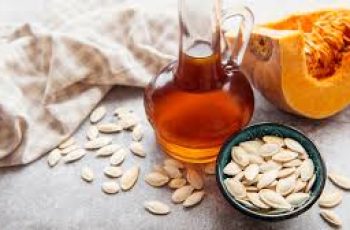Resorcinol in Skin Care
Resorcinol is a skin lightening ingredient used for acne, sun spots and other dark spots on the skin, and hyperpigmentation disorders such as melasma.
Resorcinol lightens skin by preventing the production of melanin. It is a tyrosinase inhibitor.
Common uses
Resorcinol is most commonly used to treat conditions like:
Acne
Melasma
Post Inflammatory Pigmentary Alteration (PIPA).
You can find a selection of resorcinol and related products here!
To find the best matches for your regimen, make sure to shop based on your Baumann Skin Type.
Is it safe?
Resorcinol is used in a number of skin lightening and acne products. It has been safely used by dermatologists for many years for in office peels.
It is not advised to be used during pregnancy.
There is a chance of having a skin allergy to this ingredient which can result in redness or a rash.
Irritation can occur with strong concentrations of resorcinol. This is why it is most commonly used in chemical peels by dermatologists rather than in at home products.
Irritation and allergic reactions can cause inflammation that leads to hyperpigmentation- which means- when you use resorcinol to treat melasma and another forms of pigmentation, you can worsen melasma if used incorrectly.
Concerns
Some concerns associated with regular use of resorcinol are:
Skin irritation with resulting hyperpigmentation
Possible allergic reaction
The EWG rates resorcinol as a 7. (1 is low danger while 10 is high danger on the EWC scale).
Its use in cosmetics is restricted in Japan and Canada.
resorcinol during pregnancy
Is resorcinol safe to use during pregnancy?
No, it shouldn’t be used during pregnancy.
It has been shown to be found in urine when used topically and effects on the unborn fetus are not known.
There are other ways to treat skin conditions like melasma during pregnancy.
Can it be used orally?
Resorcinol should not be used orally for skin care uses. In fact, one death in Turkey was reported. (21)
Side-effects
If you have an allergy to resorcinol, you might expect
slight rash
redness
irritation on the applied area.
If used in too great a quantity or frequency, resorcinol products may cause irritation on applied areas.
Applying products containing this ingredient outside of one’s target dark spots may result in a slight “halo” effect around dark spots.
Overuse might result in “Post Inflammatory Pigmentary Alteration” (PIPA), a darkening of the skin following prolonged inflammation.
It is important to be sure the products are being applied in the correct amounts and at the right intervals.
benefits of resorcinol
Benefits
Resorcinol is a versatile product with a number of benefits. The most common benefits associated with its use are:
Treats hyperpigmentation
Eliminates bacteria on skin
Treats sun damage
Treats Melasma
Antiaging properties
Anti-aging
Resorcinol is good for anti-aging regimens because it has notable antioxidant, anti-inflammatory, and anti-glycation properties.
Antioxidants bind free radicals that can cause genetic damage to cells. Anti-inflammatories reduce the effects of oxidative stress from the sun and pollutants like dirt. Anti-glycation properties keep your skin safe from damage caused by sugars on the skin
Acne
Resorcinol directly eliminates acne-causing bacteria and has anti-inflammatory properties that make it useful as an acne treatment.
This ingredient is commonly used in peels by dermatologists, but some commercial products are available as well.
Skin lightening
Yes, Resorcinol does lighten your skin, however the effect is slow and subtle.
It does not “bleach” skin in any quick or extreme manner, but with time can improve dark spots.
This ingredient does not pose the risk of permanently lightening darker skin tones.
It is used to lighten dark spots to match surrounding lighter pigmented skin.
If you have melanated skin and are concerned about skin bleaching, check out how to get rid of dark spots on darker skin tones.
retinol
Is it like Retinol?
Resorcinol is in a different chemical compound family than retinol but they do share some similarities, namely:
tyrosinase inhibition
skin lightening
exfoliation
Retinoids are often combined with this ingredient in chemical peels.
Both ingredients can be used together in a skin care routine, depending on your Baumann Skin Type and regimen needs.
They can be combined in the same skin care products or used as separate products in different steps of the skin care routine.
Take the Quiz
resorcinol vs retinol
Vs Hexylresorcinol.
Hexylresorcinol is a derivative of resorcinol.
Resorcinol is stronger and more likely to cause skin irritation.
Another derivative similar to both of these compounds is phenylethyl resorcinol.
Resorcinol Products
There are a variety of products on the skin care market which include phenylethyl resorcinol and hexylresorcinol, but resorcinol is found primarily in chemical peels performed in medical offices. That being said, there are some great commercially available resorcinol products as well. Here are a few of our favorites.
To find the best skin care products for your skin type- make sure you shop by your Baumann Skin Type.
DQH Can I use salicylic acid first and then vitamin C?
It’s easy to create a skincare routine, but knowing how to use it is another thing entirely. In most cases, if you’re not getting the desired skin results, it could be due to the layering of conflicting ingredients. So, is it possible that salicylic acid and vitamin C are such ingredients? Or are these active ingredients the duo that’s been missing from your skincare routine? If you want answers, stick around because today we are going to explain the benefits of salicylic acid and vitamin C and how they can be used in your daily life.
What are the benefits of salicylic acid for skin?
Salicylic acid is one of the most commonly used beta hydroxy acids and is favored by many people with oily, acne-prone skin. This acid is derived from willow bark, and unlike its water-soluble relatives (called alpha-hydroxy acids), salicylic acid is oil-soluble, which means it can penetrate deeper into the lower layers of the skin. Once it reaches the lower layers, it can help unclog pores of excess sebum, dirt, bacteria, debris, and impurities. This results in clearer skin tones and greater definition.
Not only does salicylic acid benefit the underlying layers, but the outer surface of the skin benefits as well. When applied to the skin, salicylic acid removes the buildup of dead skin cells. This is accomplished by breaking the bonds that hold dead cells to the surface. Over time, this can cause the complexion to look dull and prone to acne, blackheads, and other blemishes.
If you’d like to learn more about salicylic acid and how it can improve your skin, check out this dedicated blog post from a beauty insider.
What are the benefits of vitamin C for skin?
Vitamin C is considered one of the most powerful antioxidants, which means it is very effective at fighting free radicals and preventing them from causing further skin damage. Examples of free radicals include pollution, central heating, UV rays and harsh climate. They attack proteins, fats and cell membranes as soon as they come into contact with the skin, causing signs of premature aging such as fine lines and wrinkles as well as hyperpigmentation, flaky patches of skin and loss of elasticity.
Many people usually prefer to use vitamin C in their morning routine as this ingredient gives the complexion a radiant glow. You’ll also find that vitamin C can target areas of hyperpigmentation, plumping the skin and reducing the appearance of fine lines and wrinkles.
The thing about vitamin C is that there are a lot of outdated studies going back to the 1950s that describe vitamin C as an unstable skin component. Thanks to improvements in modern technology, this is no longer the case as all products now contain a stable form of vitamin C.
Visit The Beauty Insider to learn more about vitamin C. So please check out our blog post.
Can I use salicylic acid first and then vitamin C?
Yes, you absolutely can. In fact, it’s thought that using salicylic acid before using vitamin C ensures it penetrates faster and works faster.
This is an efficient way to utilize two power sources, and the reason has to do with pH. For example, the skin’s natural pH is about 4.7, making it slightly acidic. Salicylic acid and vitamin C are also both acidic, and you’ll find that vitamin C is absorbed quickly into the skin. Therefore, using salicylic acid beforehand can increase the acidity of the skin and allow vitamin C to penetrate into the skin faster.
While this is considered an effective way to combine two powerful ingredients, you need to be aware of your skin type and how it reacts to certain active ingredients. Even people with perfect, normal skin can experience skin sensitivity and irritation. Therefore, always consult a doctor or dermatologist before using any new products on your skin.
It’s also important to follow skin application rules. In this case, you need to use the product correctly to ensure you get the best results for your skin. If you’re not sure what I mean, the basic rule for skin is to start with the thinnest consistency and work your way up to the thickest consistency. This prevents a barrier from forming on the surface, preventing other active ingredients from penetrating the skin.
Can I use salicylic acid at night and vitamin C in the morning?
Yes, absolutely, this is considered the most effective way to get returns without any adverse side effects. This is because there is enough time between applications to ensure that the skin’s pH levels return to balance.
You’ll also find that Vitamin C is rich in antioxidants and is perfect for use in the morning to ensure your skin is protected and looking its healthiest. Due to the small size of salicylic acid molecules, it is an acid that is able to reach the deepest parts of the skin. While this is effective at keeping skin clear, it also increases the risk of irritation and photosensitivity. Therefore, many people prefer to use powerful BHAs in their evening routine without exposure to UV rays, pollution, or harsh weather.
Warning: If you avoid using sunscreen every day, none of these ingredients will do what your skin needs. The combination of chemical peels and powerful ingredients increases the risk of further damage to the skin’s surface. Use SPF 50 every day to keep your skin protected and your lipid barrier healthy, even on cloudy days, keeping your skin in top condition.



